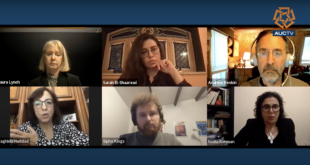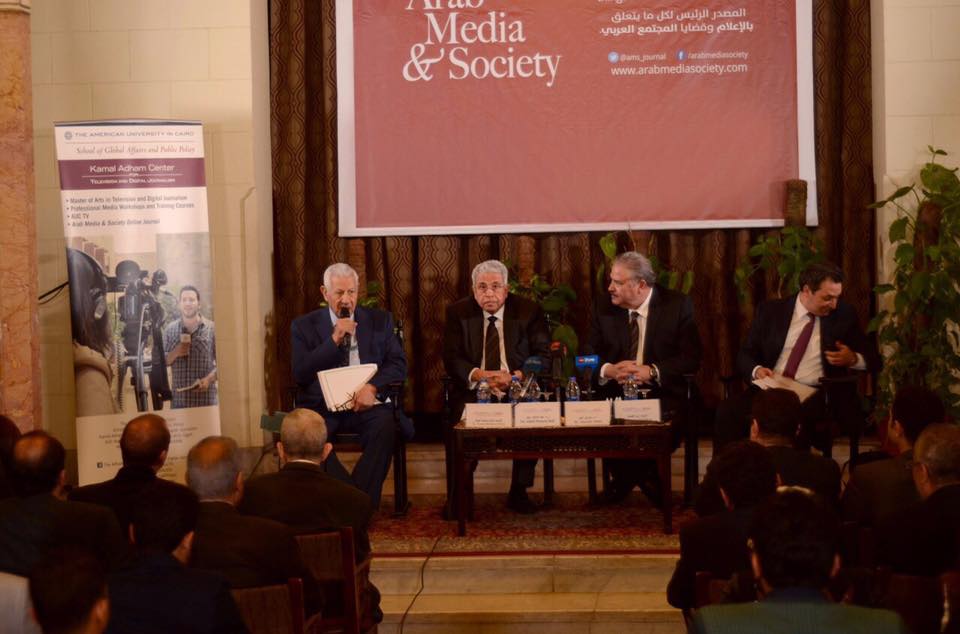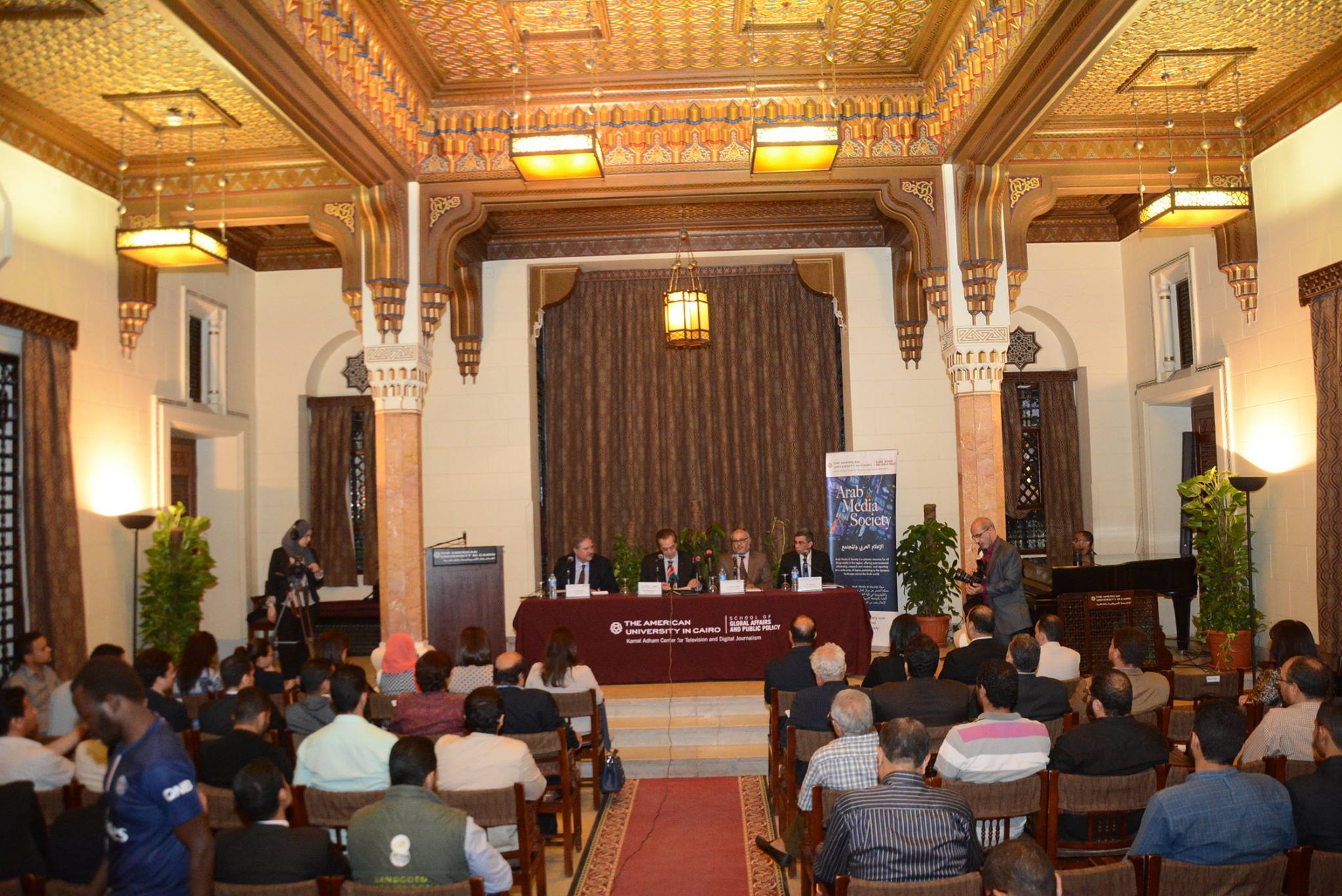| Remarks by Peter Einstein, President and CEO of Showtime, at the MIT Arab Alumni Association Conference at Beirut's Sheraton Coral Beach on March 24, 2002. |
Good morning distinguished guests, ladies and gentlemen.
I'd like to welcome you to this session on regional television networks which I have called: The digital dilemma: television and technology in emerging markets.
I'd also like to introduce our panelists. Dr. Nadim Munla, CEO of Future TV, and Pierre El Daher, CEO of LBC International. We're friendly foes all working with the best interests of the Middle East television viewer at heart.
Nadim is currently spearheading the integration of three of the major regional commercial television channels: Future, MBC, and Zen. He will be presenting his views on the future for regional networks through rationalization and re-positioning.
Pierre has led the development of LBC into one of the few regional mega-channels based on developing a commercially viable product that is attractive to viewers and advertisers. Pierre will be outlining his view on the way forward for the advertising industry in the region when it is faced with even greater media opportunities presented by digital broadcasting.
In this brave new world of digital convergence, content - movies, music, software - is available in multiple formats and accessible through an ever-growing range of devices like mobile phones, PCs and PDAs (Personal Digital Assistants).
Yet, despite the sophistication and development of emerging technology, the epigram coined by Viacom chairman Sumner Redstone - 'Content is king' - still rings true.
Technology is simply a means to an end and what users really want is quality content-better television programs, more movies, faster computer programs, the latest music releases.
So it is surprising that an under-developed region like the Middle East should be a digital pioneer.
The region witnessed the launch of the world's first digital television network in 1994, albeit operating on a non-standard technology platform.
When MPEG-2 was adopted as the de facto standard, two more digital television networks were launched in 1996.
Unlike other markets around the world there was no history in the Middle East of viewers paying for television. There was no analogue-pay-TV base and the result was an immediate transition from an analogue free-to-air television market to a digital pay-TV market.
The rush to saturate the region with digital TV networks created the world's most competitive pay-TV market, with three competing platforms-and that competitive environment is bad news for broadcasters and for consumers.
Broadcasters are faced with the cost of subsidizing hardware-decoders and satellite dishes-while, at the same time, bidding competitively to acquire broadcast rights to a finite amount of premium and exclusive content. The result has raised the cost of initial investment that in some cases may mean that a return will never be realized.
The competitive environment is also bad news for viewers because they are faced with the expensive option of potentially having to subscribe to three networks to watch the premium and exclusive content that interests them.
In principle the Middle East and North Africa should prove a safe bet for investors in television with more than 300 million people sharing a common language. Yet there are only around 20 million television households while the regional per capita income hovers around $2,000.
The television sector in the Middle East is also skewed by the funding of public sector, state-run channels, while the commercial, regional free-to-air channels - including MBC, Future and LBC - are battling in a stagnant advertising market.
Regional television development in the region is therefore a classic case of the technology dilemma. How quickly should new technology be rolled out in emerging markets? Is the market ready or are broadcasters shooting themselves in the foot? Can the market sustain the investment?
In the television sector, viewers don't 'buy' brands or technology - they 'buy' content. Technology is simply the gateway to deliver entertainment services and programming.
The good news is that digital broadcast technology can deliver a range of cost-effective, value-added services like distance learning channels, real-time stock market tickers, demographic and special interest group niche channels like The Golf Channel, and a greater range of viewer options like Pay Per View movies, interactive video games and viewer polls and voting.
Because of the early adoption of digital technology-and the vision of the Egyptian government to launch two high-powered digital broadcast satellites-the Middle East television sector is embroiled in trench warfare in both the free-to-air and pay-TV segments.
The issues are many but I think three are of key importance.
Quantity vs. quality
There is simply too much television choice in the Middle East. Around 700 TV channels are accessible with just three satellite dishes-and too many of those channels are what I call 'me, too'-public state-funded channels delivering similar content.
What is needed is some rationalization and re-positioning of channels to provide viewers with more focus and better quality content. Nadim will be arguing this case but I think there is a need to rationalize public sector, state funded channels through regionalization.
In my view there is an opportunity for channels funded by the Arab states to merge programming and schedules, to share regional news output, and to produce local/state news bulletins. Local news and sport drives local audiences. In practice, what is called for is a regionalization of another Sumner Redstone truism, the notion of 'think global, act local.'
It was on this principle that MTV exploited the development an innovative multi-platform approach that showcases award-winning content via 73 cable, satellite and terrestrial TV networks, 38 Web sites, PC broadband cable, mobile phones, PDA (personal digital assistants), and other emerging technologies throughout Asia Pacific, Europe, North America, Latin America and Russia.
Stagnant advertising revenue
The second key issue is a stagnant advertising market. Advertising is the lifeblood of commercial free-to-air television channels. It pays for content and production.
The sheer volume of channels splinters audiences across ill-defined niche channels that fail to attract advertisers or commercial program sponsors. There are too many channels each barely different from the others chasing the same advertising pie.
A regionalization strategy provides media buyers with stronger reach for regional campaigns with local (state) options.
Conversely, digital broadcasting technology also facilitates the introduction of added value services that can differentiate channels and networks.
Developments like Pay Per View, interactive broadcast video games, and viewer polling provide greater choice. They deliver tightly defined demographic and detailed 'buy' rates attractive to advertisers willing to pay premium rates for spots.
Pierre will be assessing the advertising opportunities offered by digital broadcasting and how commercial stations can benefit through increasing advertising revenue.
Piracy and copyright abuse
The third key issue is piracy and copyright abuse.
Television piracy is theft. It's bad news for pay-TV broadcasters who are being robbed of revenue. It's bad news for viewers who are being fobbed off with inferior product. And it's bad news for Government-especially here in Lebanon, which suffers from large-scale television piracy.
There are enormous potential benefits to the Lebanese economy in terms of job creation, revenue generation, and inward investment resulting from rigorous enforcement of international copyright laws.
A report by market research company Statistics Lebanon revealed that the Lebanese economy is losing over $40 million a year through piracy of international satellite TV channels alone.
The deficit is derived from losses in tax revenue and is compounded by the deterioration of all sectors of the audiovisual market, including a 50 percent decline in cinema sales and the closure of more than 3,000 video rental stores.
The hidden losses are even greater. Showtime, for example, chose Dubai as its regional headquarters and in four years has seen its number of employees in the Emirate rise from just six to more than 100 staff.
Our operations in Lebanon should match that rapid growth yet without proper copyright protection there is little encouragement to invest. Meanwhile, Showtime operations in Kuwait, Saudi Arabia and, recently, Jordan, have also grown significantly.
Lebanon is the most entrepreneurial country in the region and has the most educated workforce with particular talents in the I.T., media, entertainment and music sectors, yet companies are choosing other cities in the Middle East for their regional headquarters.
That investment and job creation should come to Lebanon but companies are being driven away by the relaxed attitude towards copyright infringement.
Piracy-the unlicensed use, reproduction, sale, or distribution of copyrighted material-is a plague of the digital era. It is the largest single threat to the survival of creative enterprises.
The protection of copyright, the stringent enforcement of federal laws, and the prosecution of offenders were major factors in the success of Dubai as a regional hub for the media and I.T. sectors.
Until two years ago, Dubai was not renowned for its excellence in media production and information technology. However, government efforts to enforce copyright protection, complemented by investment in infrastructure, have initiated the success of Dubai Internet City and Dubai Media City.
With Lebanon's talent, creativity, and history of media production especially, there is no reason why Beirut should not compete again on a regional basis.
I believe that these are the issues caused by the early adoption and roll-out of digital broadcasting technology to the Middle East region. It gives me great pleasure to invite our panelists, Dr. Nadim Munla of Future Television and Pierre El Daher of LBC International to give their appraisals of the opportunities.
 Arab Media & Society The Arab Media Hub
Arab Media & Society The Arab Media Hub




